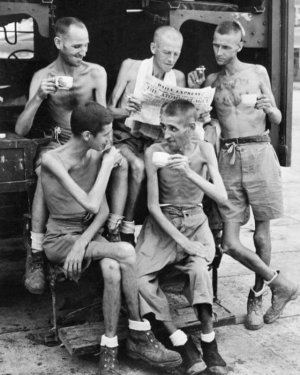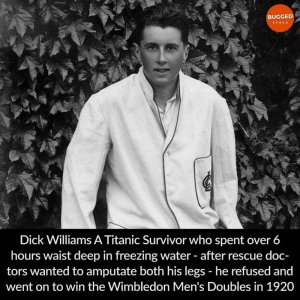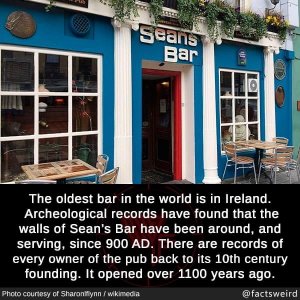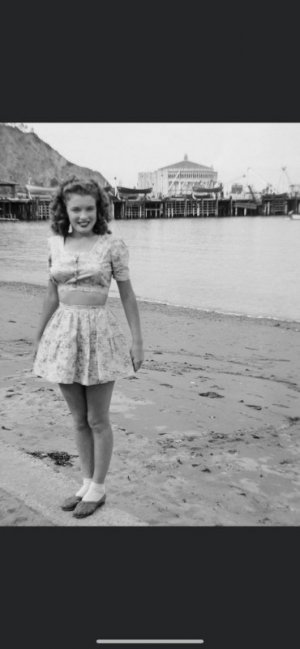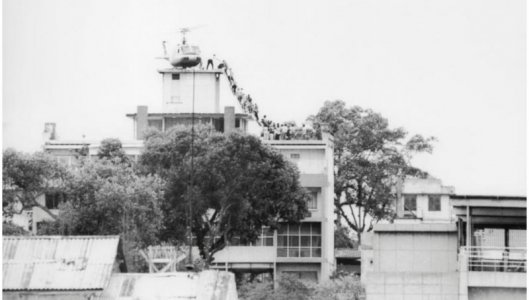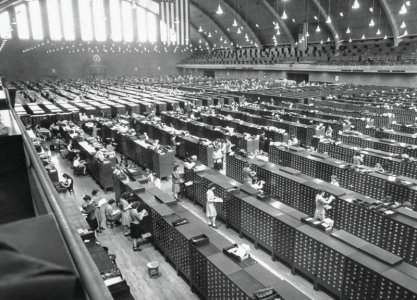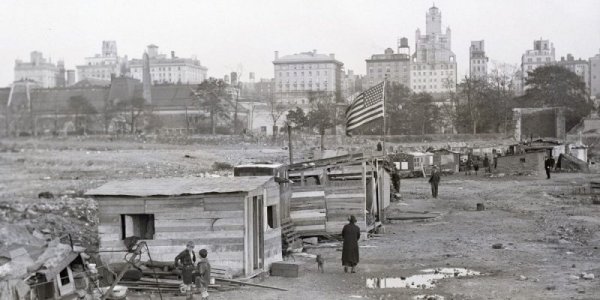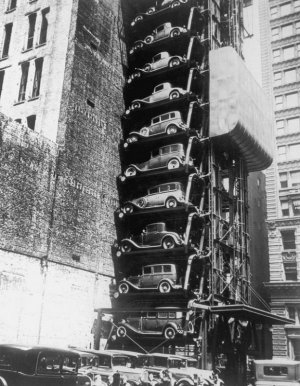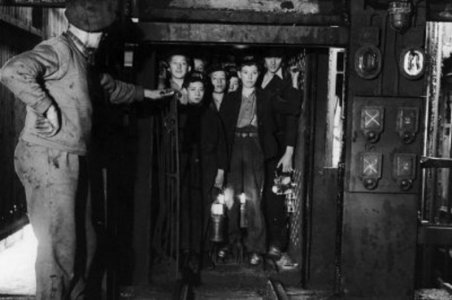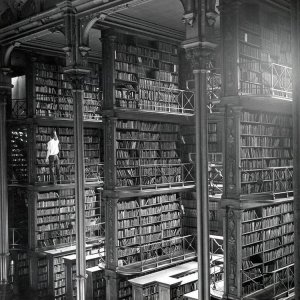You are using an out of date browser. It may not display this or other websites correctly.
You should upgrade or use an alternative browser.
You should upgrade or use an alternative browser.
History, anything goes, including pictures
- Thread starter mellowyellow
- Start date
mellowyellow
Well-known Member
Pappy
Living the Dream
mellowyellow
Well-known Member
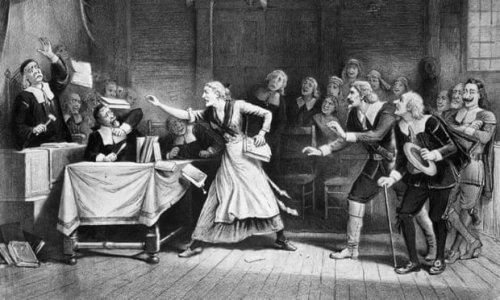
Lithograph of witch trial in Salem, Massachusetts. Photograph: Bettmann Archive
State senator Diana DiZoglio, a Democrat from Methuen, has introduced legislation to clear the name of Elizabeth Johnson Jr, who was condemned in 1693 at the height of the Salem witch trials but never executed.
DiZoglio says she was inspired by sleuthing done by a group of 13- and 14-year-olds at North Andover middle school. Civics teacher Carrie LaPierre’s students painstakingly researched Johnson and the steps that would need to be taken to make sure she was formally pardoned. If lawmakers approve the measure, Johnson will be the last accused witch to be cleared, according to Witches of Massachusetts Bay, a group devoted to the history and lore of the 17th-century witch-hunts.
mellowyellow
Well-known Member
Pappy
Living the Dream
Jimmy Stewart and his father, Alexander, at his family’s hardware store in Indiana, Pennsylvania. The store was established by Jimmy’s grandfather in 1853 and ran by Jimmy’s father until he was 88. After Jimmy won his Academy Award in 1940, his father called him: “I hear you won some kind of award. What was it, a plaque or something? Well, anyway, you better bring it back here and we’ll put it in the window of the store.” The Oscar would displayed in the store for 25 years alongside other family awards and military awards.
Photos taken by Peter Stackpole for Life Magazine, September 1945.
Caption appeared slightly differently on a post from @darlinghollywood on Instagram.
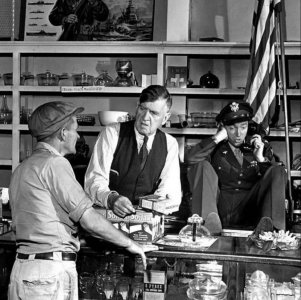
Photos taken by Peter Stackpole for Life Magazine, September 1945.
Caption appeared slightly differently on a post from @darlinghollywood on Instagram.

Pappy
Living the Dream
His mother was 40 years old when Jesse was born. Jesse grew up in a very rough home in Morgantown, West Virginia. Jesse’s father, who was mentally ill, was a violent man and was abusive to Jesse. At 13, his father died leaving his mother to take care of him and his brothers. At the time, things weren’t easy for Jesse and he didn’t think life held much hope for him. While Jesse had his struggles, he had dreams too. He wanted to be a ventriloquist and he found books on ventriloquism. He practiced with sock puppets and saved his money until he could get a real ventriloquist dummy. When he was old enough, he joined the military. The military recognized his talents and placed him in the entertainment corp. He toured the western Pacific Islands as a comedian as part of a G.I. variety show called "Stars and Gripes.” It was there he was able to share his talents with fellow soldiers. In 1946, he discharged with rank of Technician Grade 5, which was the equivalent then of a Corporal. During his military service, Jesse was awarded the World War II Victory Medal, Philippine Liberation Medal, Asiatic-Pacific Campaign Medal (with 4 bronze service stars), Army Good Conduct Medal, Marksman Badge (with an M1 Carbine) and Honorable Service lapel pin. Through his military service, Jesse gained confidence and found that he had a talent for making people laugh. In spite of his early struggles, Jesse became one of the best-loved characters of all time. For it was Jesse,...Jesse Don Knotts who brought us Barney Fife!
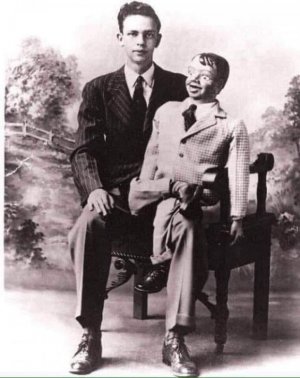
mellowyellow
Well-known Member
mellowyellow
Well-known Member
mellowyellow
Well-known Member
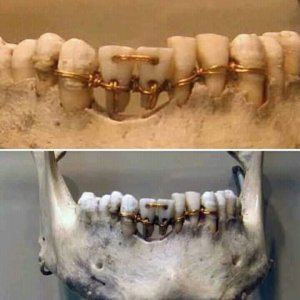
From both physical evidence discovered and written evidence in Egyptian health care manuals, Egyptians learned around 3000 B.C. that they could cure dental problems by pulling teeth and drilling out cavities. There were also a range of dental treatments eventually used in ancient Egypt, including packing teeth with a “composite” made of barley, honey and an antiseptic, and using a “mouthwash” of various syrups to relieve inflammation and pain. Evidence also shows that the Egyptians were able to complete more extensive, physical dental work. Archaeologists have discovered several examples of teeth that had dental bridges or “prosthetic appliances.”
mellowyellow
Well-known Member
oldpanightowl
New Member
- Location
- Southeastern Cackalacky
mellowyellow
Well-known Member
So sorry for the loss of your soldiers and so many innocents at the airport, like another poster suggested, I hope ISIS and Taliban do us all a favour and end up killing each other.
One of my fears is that our inept handling of Afghan will cost us GOOD Allies like the Aussie.So sorry for the loss of your soldiers and so many innocents at the airport, like another poster suggested, I hope ISIS and Taliban do us all a favour and end up killing each other.
Vietnam
Iraq
Afghan
mellowyellow
Well-known Member
mellowyellow
Well-known Member
mellowyellow
Well-known Member
Pappy
Living the Dream
1950s Photo CHENANGO CANAL FEEDER by Guy K. Weeden of Sidney NY. He was also the Village Clerk.
According to Wikipedia, The Chenango Canal was a towpath canal built and operated in the mid-19th century in central New York in the United States. It was 97 miles long and for much of its course followed the Chenango River, along Rt. 12 N-S from Binghamton on the south end to Utica on the north end. It operated from 1834 to 1878 and provided a significant link in the water transportation system of the northeastern U.S., connecting the Susquehanna River to the Erie Canal.
The Chenango was unique in that it was the first reservoir-fed canal in the U.S. In this design, reservoirs were created and feeder canals were dug to bring water to the summit level of the canal.
After 1900, a surviving stretch of the then-closed canal gained notoriety owing to its use to transport contraband through the town of Hamilton. Tobacco, alcohol (during Prohibition), and marijuana were transported along the canal. In order to control this traffic, NY State officials decided to build a checkpoint along its route. Surprisingly, over five million dollars worth of illegal goods were confiscated, from 1900 until about 1930, in what would become one of the most famous water-borne transportation enforcements of that time.
Photo from my collection.
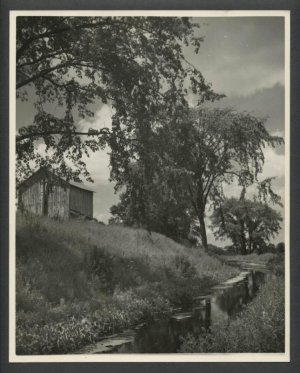
According to Wikipedia, The Chenango Canal was a towpath canal built and operated in the mid-19th century in central New York in the United States. It was 97 miles long and for much of its course followed the Chenango River, along Rt. 12 N-S from Binghamton on the south end to Utica on the north end. It operated from 1834 to 1878 and provided a significant link in the water transportation system of the northeastern U.S., connecting the Susquehanna River to the Erie Canal.
The Chenango was unique in that it was the first reservoir-fed canal in the U.S. In this design, reservoirs were created and feeder canals were dug to bring water to the summit level of the canal.
After 1900, a surviving stretch of the then-closed canal gained notoriety owing to its use to transport contraband through the town of Hamilton. Tobacco, alcohol (during Prohibition), and marijuana were transported along the canal. In order to control this traffic, NY State officials decided to build a checkpoint along its route. Surprisingly, over five million dollars worth of illegal goods were confiscated, from 1900 until about 1930, in what would become one of the most famous water-borne transportation enforcements of that time.
Photo from my collection.

mellowyellow
Well-known Member
mellowyellow
Well-known Member
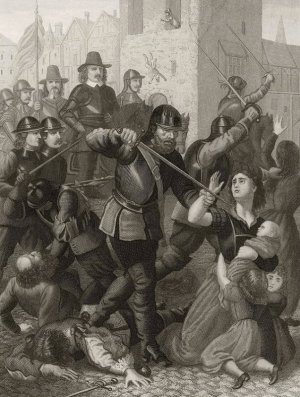
Oliver Cromwell killing Civilians in the Irish town of Drogheda (1649)
……………..A two-day academic conference (18-19 February) will expose unsubstantiated propaganda within the 31 handwritten volumes of witness statements that provided Oliver Cromwell with justification for his subsequent slaughter of defeated garrisons at Drogheda and Wexford. Described as a prototype "dodgy dossier" featuring allegations of cannibalism, the 17th-century accounts of atrocities committed against Protestant settlers have been put online for the first time.
Historians, linguists, software specialists and the public have been invited to trawl through newly transcribed versions of the original documents held in Trinity College, Dublin……………. https://www.theguardian.com/world/2011/feb/18/1641-irish-rebellion-anti-catholic-propaganda
mellowyellow
Well-known Member
OneEyedDiva
SF VIP
- Location
- New Jersey
Yesterday was the 58th anniversary of the March on Washington (Aug. 28, 1963). Look at all those people. The march for civil and economic rights for Blacks was one of the largest rallies for human rights in U.S. history. It culminated with Dr. Martin Luther Kings giving his "I Have A Dream" speech. More about the march here: https://en.wikipedia.org/wiki/March_on_Washington_for_Jobs_and_Freedom @Pecos
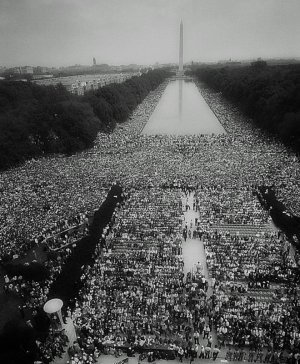

Pecos
Well-known Member
- Location
- Washington State
That speech will go down as one of the greatest in history.Yesterday was the 58th anniversary of the March on Washington (Aug. 28, 1963). Look at all those people. The march for civil and economic rights for Blacks was one of the largest rallies for human rights in U.S. history. It culminated with Dr. Martin Luther Kings giving his "I Have A Dream" speech. More about the march here: https://en.wikipedia.org/wiki/March_on_Washington_for_Jobs_and_Freedom @Pecos
View attachment 181100



